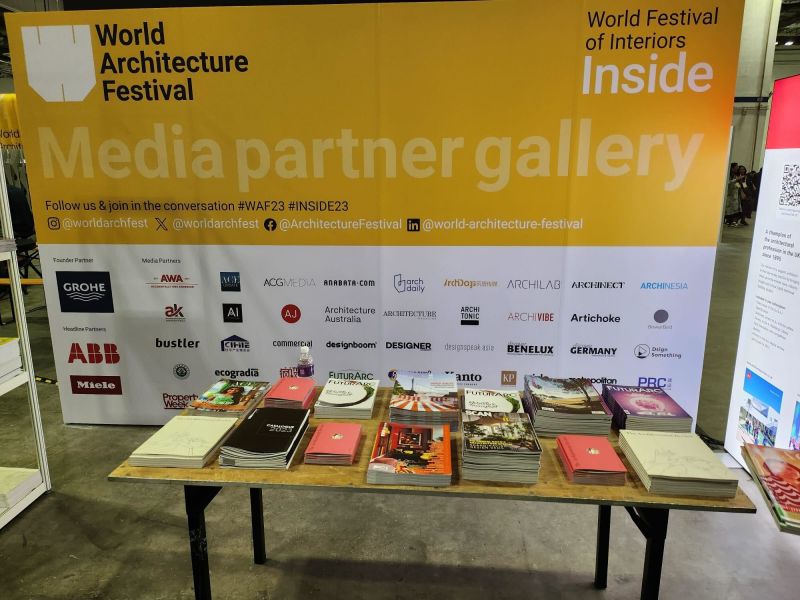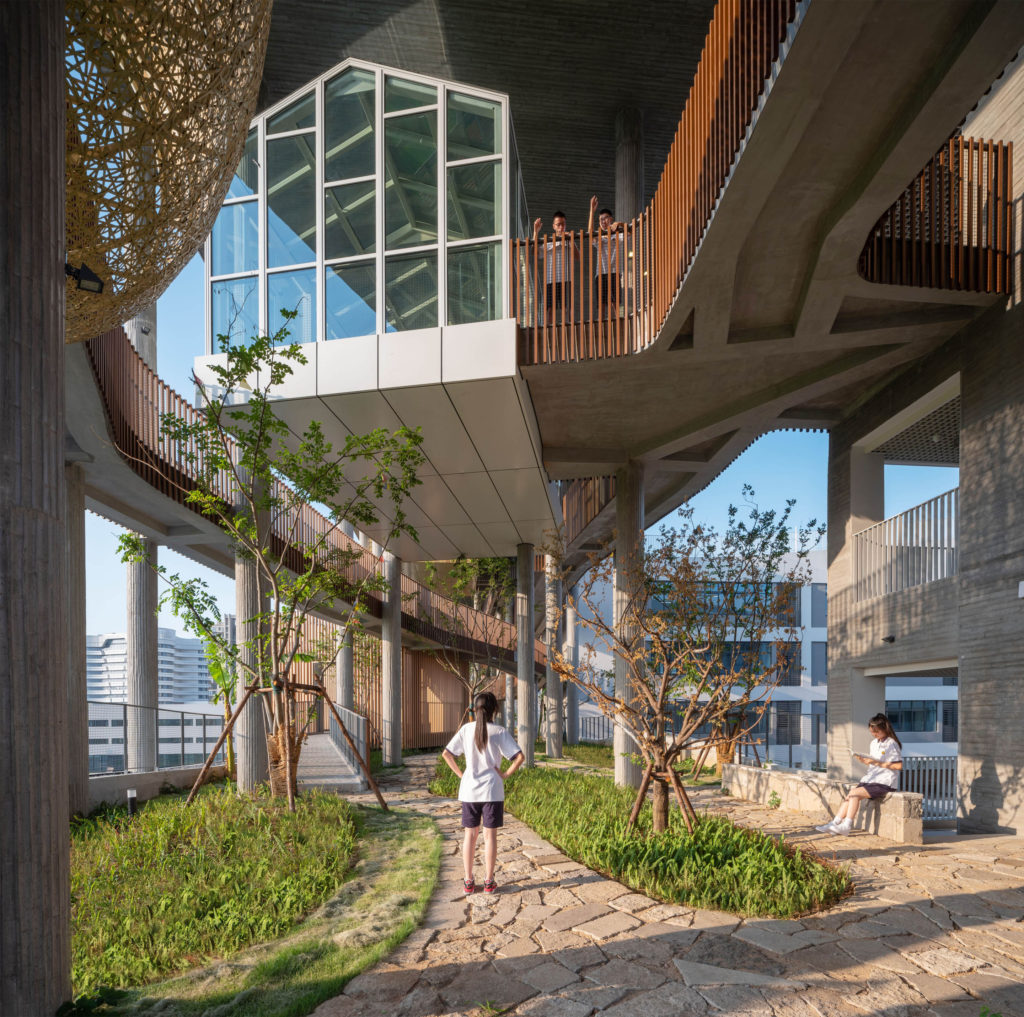An explorative high school where time is designed to be ‘wasted’ tops the World Architecture Festival’s awards in 2023
FRIDAY, 8 DECEMBER 2023 – On Friday 1 December 2023, the World Architecture Festival (WAF) concluded the annual festival with a gala dinner and awards ceremony at the Marina Bay Sands, Singapore. For three days, starting from 29 November, the international architecture community gathered to view presentations on shortlisted projects in front of a live crit panel, alongside keynote talks and project exhibitions. Other fringe events, such as architecture tours and a student charette, also provided avenues for learning and connection to a wide range of participants.
As media partner, FuturArc magazines were displayed at the Media Gallery to hundreds of WAF delegates from around the world.


World Building of the Year


Award winners from a total of 44 categories competed for the ultimate accolades of World Building of the Year, World Interior of the Year, Future Project of the Year and Landscape of the Year. Taking the crown as World Building of the Year in 2023 was Huizhen High School by Approach Design Studio/Zhejiang University of Technology Engineering Design Group in China. The project boldly explored campus design, providing a range of spaces where “time can be ‘wasted’ seriously” within an efficient model of education. “While efficiency is certainly important, we believe that under heavy pressure, children need more blank spaces … where they can adjust their minds and bodies and discover beauty,” said the architects.
Future Project of the Year
Future Project of the Year went to The Probiotic Tower by Design and More International in Egypt. Its central proposition is to repurpose obsolete water towers to positively address climate change as an adaptive system for cities, particularly in the developing world. At the core of the tower is a large algae bioreactor tank that absorbs CO2 from local sources. The building is expanded by establishing a bamboo plantation on-site and creating a bamboo Cross-Laminated Timber Production facility that grows modular components to build a supportive scaffold around the tower. Other features to promote the absorption of CO2 include facade algae panels, reed beds for treating wastewater and photovoltaic panels.
READ MORE: Green Awards | Cross-Generational Architecture
Landscape of the Year

Landscape of the Year went to Benjakitti Forest Park: Transforming a Brownfield into an Urban Ecological Sanctuary by TURENSCAPE, Arsomsilp Community and Environmental Architect in Thailand (read more about this project in FuturArc’s 2Q 2023 issue). The park transforms a former tobacco factory into a resilient living ecosystem, which is now the largest public recreational space in downtown Bangkok. The project reduces the destructive force of stormwater, filters contaminated water, and provides much-needed wildlife habitat in a region experiencing monsoon climates with an average yearly precipitation of about 1500 millimetres.
Rifle Range Nature Park by Henning Larsen in Singapore, Boca de la Mina Promenade in Reus by Batlleiroig Arquitectura in Spain and Mayfield Park by Studio Egret West in the United Kingdom were also highly commended in the Landscape category.
Awarding catalyst ideas
The category of WAFX Prize recognises future projects that best use design and architecture to tackle major world issues, including health, climate change, technology, ethics and values. The overall winner was Rethinking Oil Rigs – Offshore Data Centres by Arup in United Kingdom. The project rethinks oil rig structures as data centres giving them a new function in the fast-expanding circular economy.


A host of Special Prizes in various thematic categories were bestowed, including Small Project of the Year, given to Karuizawa Commongrounds Bookstore by Klein Dytham architecture in Japan; Best Use of Colour to Turrell Pavilion by Studio MK27 in the Maldives; the International Building Beauty Prize to Angsila Oyster Scaffolding Pavilion by Chat Architects in Thailand; and others.
Seven university teams were also shortlisted to take part in a Student Charrette related to the programme theme ‘Catalyst’ during the live festival. The theme was intended to stimulate thinking about ways in which design could accelerate beneficial change in respect of challenges facing society. The student charette was won by BALAY ARAPAAP: An Inclusive Informal Learning Center for the Remote Island of Puro Caoayan by a team from the University of North Philippines.
Next year, the World Architecture Festival and INSIDE World Festival of Interiors will take place once again at Marina Bay Sands, Singapore, on 6–8 November 2024.
Don’t miss out on our ongoing competition—submit your entries for FuturArc Prize 2024: Architecture for Life After … now!


